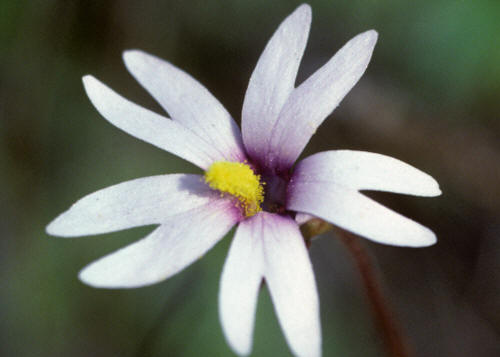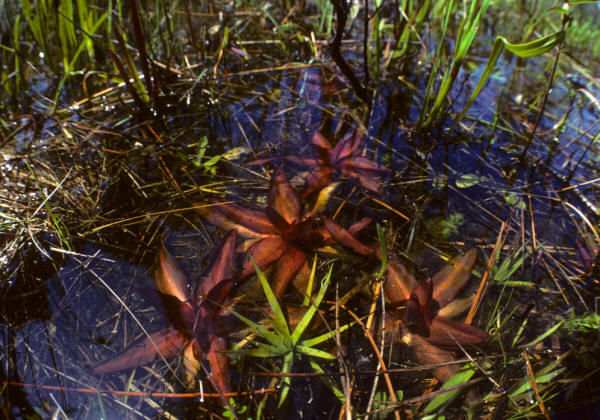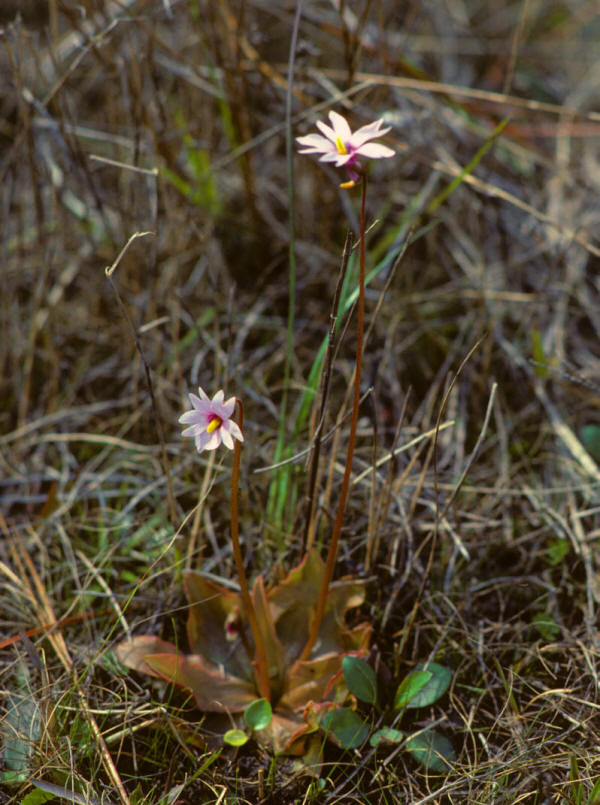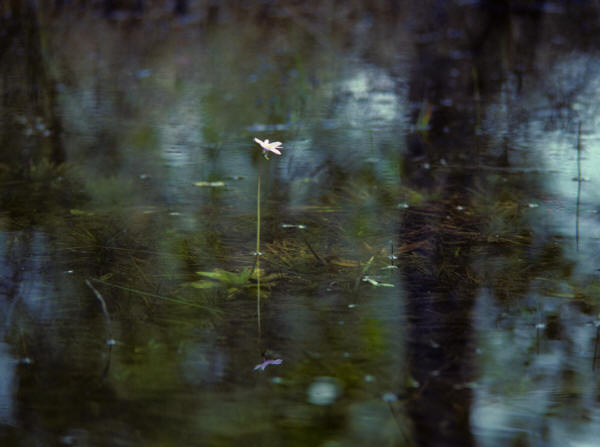|
Carnivorous Plants Story
|
||
|
|
Pinguicula planifolia Having been accustomed to the general light green color of the leaf, finding a large butterwort in the field assuming a deep maroon coloration is a rather shocking experience. The plant of P. planifolia is endemic to the coastal regions of Mississippi, Alabama, and the western half of the Florida panhandle. The plants prefer very wet environment, re, the plants are often found totally submerged in the water after a heavy rain. A leaf may grow up to several centimeters in length, forming a huge rosette of 15 cm across in the wild. Leaf edges curl up modestly. The species produces no hibernacula during the winter months. The plant flowers from February to mid-April in Florida. A tall scape grows up to 35 cm. A characteristic pale purple flower with deeply incised lobes (half their length) immediately identifies this species when in flower. In full sun, the corolla lobes open widely, with a yellow palate prominently exserted from the corolla tube. A narrow, dark-purple corolla tube ends in a blunt spur 3-4 mm long.
More pictures ,....
A wet habitat is often subject to flooding after a rain. The plant is seen with its flower scape protruding out of the water surface. Some P. planifolia plants show a greenish leaf color even exposed to the full sun. I have seen some green colored individuals growing side by side with red-leaved specimens in the wild.
Introduction Venus Flytrap Sundews Pitcher Plants Cobra Plant Butterworts Bladderworts
|
|

 Has
a narrow distribution, same as ionantha
Has
a narrow distribution, same as ionantha
